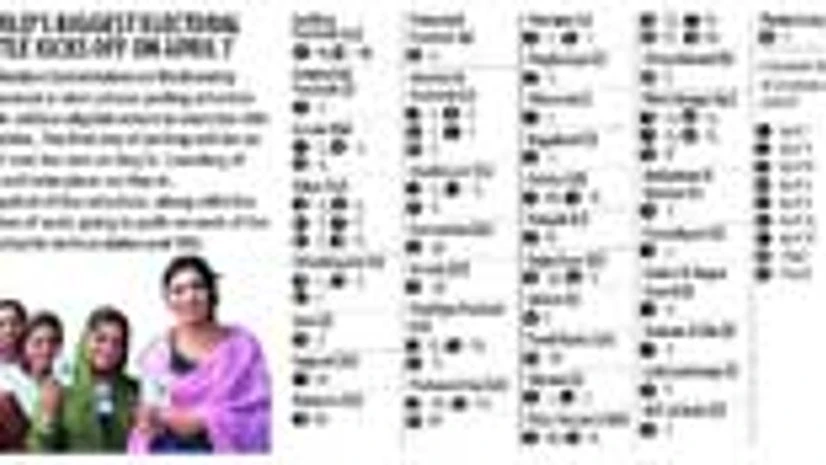The Election Commission on Wednesday announced a nine-phase polling schedule for 814 million eligible voters to elect the 16th Lok Sabha. The first day of polling will be on April 7 and the last on May 12. Counting of votes will take place on May 16.
A snapshot of the schedule, along with the number of seats going to polls on each of the nine days in various states and UTs:
Besides the Lok Sabha, electors in Andhra Pradesh, Odisha and Sikkim will also vote to elect new Assemblies during this period.
Uttar Pradesh and Bihar, which together account for 120 Lok Sabha seats, will have the longest election schedule, spread over six polling days. West Bengal (42 seats) and Jammu & Kashmir (six seats) will vote over five days, while Assam, Chhattisgarh, Jharkhand, Madhya Pradesh and Maharashtra will vote over three polling days. All Naxal-affected areas will have single-day polling schedule.
Chief Election Commissioner V S Sampath said the polling days or phases had increased from the previous Lok Sabha elections in 2009 but the span of the poll schedule had been lowered by three days to 72 days.
He said the model code of conduct would kick in with immediate effect, adding any announcement by the central government or the three states going for Assembly polls would now be subject to the code. He said the Election Commission would ensure a level playing field so that parties in power did not have undue benefits.
Sampath said the number of eligible voters had increased by 100 million since 2009 to 814 million, a number larger than the population of Europe, making this the biggest election the world had ever seen.
India had 176 million eligible voters in its first election in 1952. Sampath added the commission had decided to "afford one more opportunity" to people who didn't have a vote to enrol. Booth-level officers across India would hold special camps on March 9 with electoral rolls for citizens to check if they were a registered voters.
In a first, Sampath said the commission had directed district administrations to ensure all polling stations were equipped with basic facilities like drinking water, a shed as protection from the harsh summer sun, ramps for the physically challenged and customary standard voting compartments.
The number of polling stations across the country had increased 12 per cent from that in 2009 to 930,000, he said. The number of government officials to carry out the exercise is estimated to be nearly 1.2 million.
Enthused by its experience in recent Assembly elections, the Election Commission has ordered 20,000 paper-trail machines to be installed at select polling stations across India.
Sampath said the commission would closely monitor candidates' poll-related expenditure. It has identified constituencies where money power is a concern; it will deploy flying squads and conduct video surveillance in these constituencies. Identifying this as the "biggest challenge", Sampath said the commission would have expenditure observers in all constituencies, besides assistant expenditure observers in sensitive ones, to monitor flow of money.
The Election Commission officials said the dates had been fixed after factoring in local climatic conditions, religious festivals and board examinations. They said a month-long consultation process was undertaken, in addition to preparatory meetings with representatives of recognised national and state parties, DGPs of the police, chief secretaries, state electoral officers, the Railway Board and home secretaries, before charting out the schedule.

)

